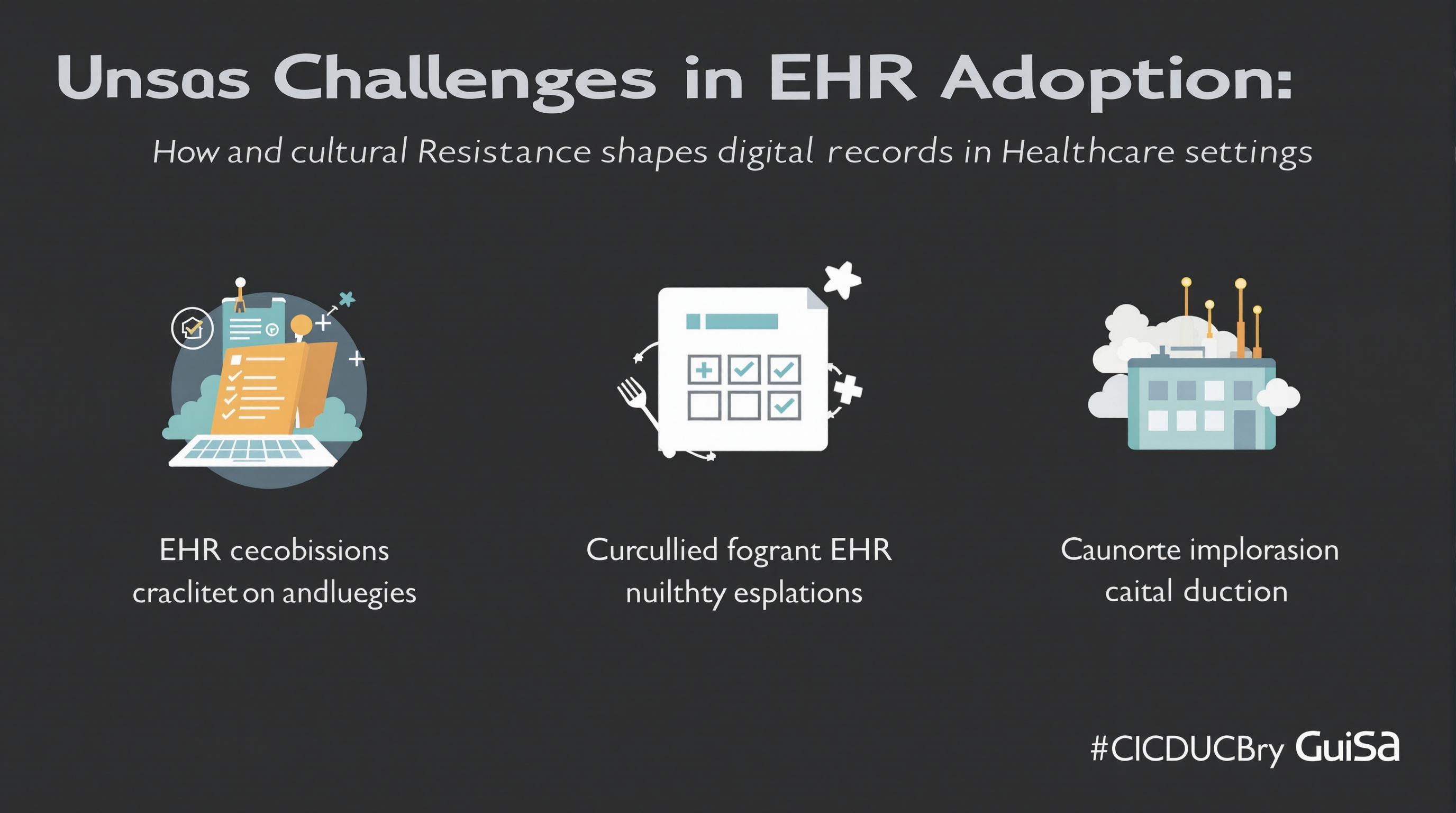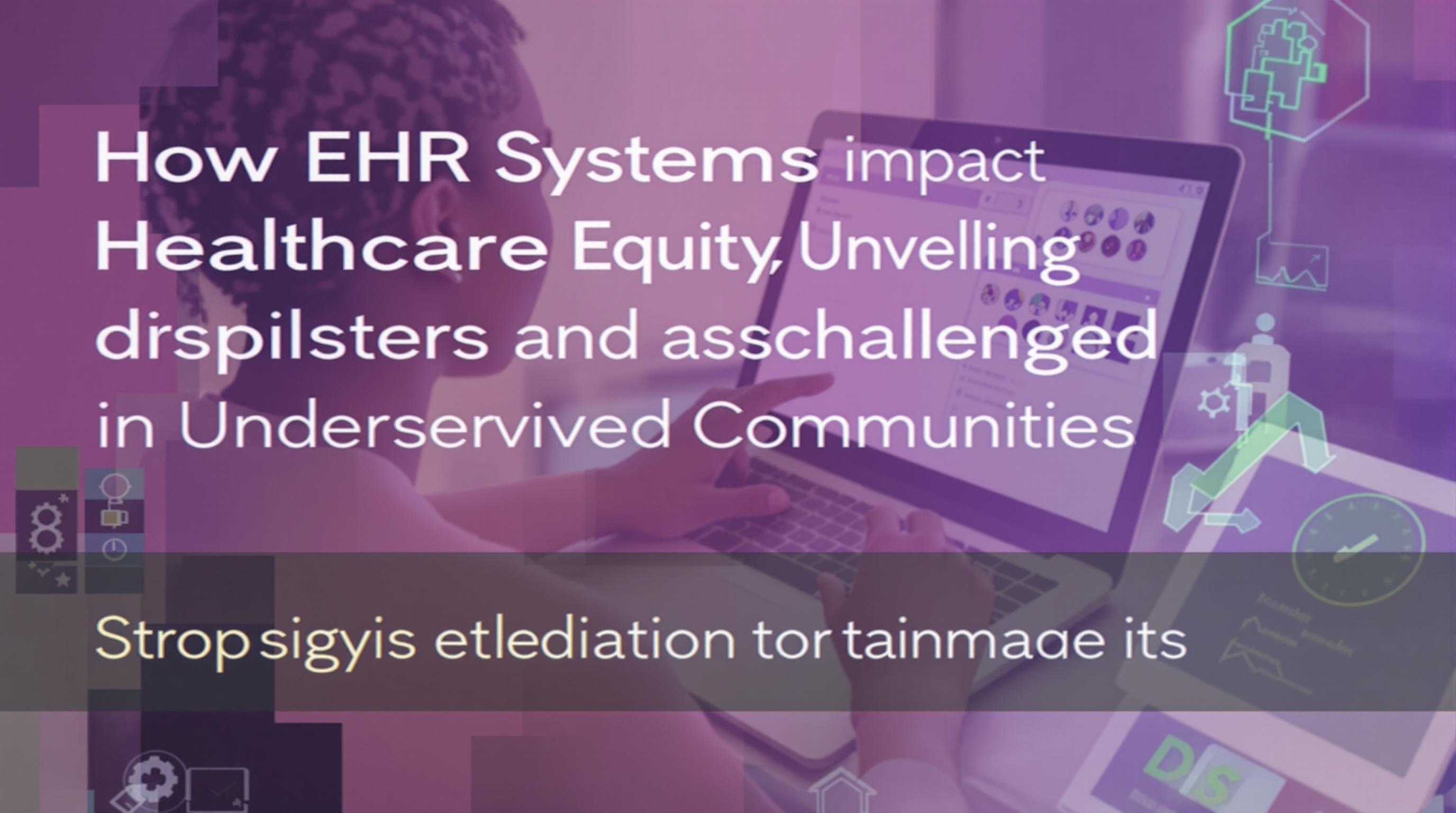Related Articles
- The Unexpected Impact of Environmental Factors on the Accuracy of Medication Dispensing Technologies
- Exploring the Influence of Mental Health Stigma on Accessibility and Affordability of Coverage in Modern Insurance Plans
- How Cloud Storage Quirks Are Quietly Complicating Patient Data Protection in Modern Healthcare Settings
- Top 6 Emerging Medical Billing Platforms Revolutionizing Practice Revenue Cycles Since 2019
- When Digital Distance Deepens Divide: Surprising Social Costs of Remote Health Services in Underserved Communities
- The Unexpected Role of EHR Usability in Physician Burnout and Strategies to Reclaim Workflow Balance
Unseen Challenges in EHR Adoption: How Cultural Resistance Shapes Digital Records in Healthcare Settings
Unseen Challenges in EHR Adoption: How Cultural Resistance Shapes Digital Records in Healthcare Settings
Adopting Electronic Health Records (EHR) is not just a technical hurdle but a cultural battleground in healthcare. Unseen resistance from staff, shaped by habits and mistrust, often dictates the success or failure of digital healthcare transformations.
The Hidden Battlefield: Culture Over Technology
I’m 54, with decades in health policy, and I’ve seen technology’s promise stumble against human nature. EHR systems, no matter how advanced, frequently clash with ingrained routines. Healthcare professionals value autonomy, crafted over years of training and practice. When a digital record system demands new workflows or impinges on clinical judgment, resistance blooms.
For example, a 2020 survey by the Healthcare Information and Management Systems Society (HIMSS) found that 48% of clinicians felt EHRs disrupted patient interaction. This isn’t a mere technical annoyance—it reflects deep-seated cultural friction where digital tools are seen as barriers rather than aids.
Stories from the Front Line
Consider Dr. Martinez, a general practitioner from Ohio, who initially resisted EHR adoption at her clinic. “The system slowed me down,” she recalls. “It felt like I was staring at a screen instead of my patients.” Over months, after targeted training and peer support, her perspective shifted. The EHR became less a hindrance and more a tool for enhancing patient care documentation.
Her journey highlights the necessity of addressing emotional and cultural resistance rather than merely pushing technology.
The Statistics Behind Resistance
Numerical data reveals the stubborn grip of cultural barriers. Studies show that up to 70% of EHR implementation failures relate to human factors rather than technical shortcomings (Journal of Medical Systems, 2019). Even with sufficient funding and infrastructure, hospitals report prolonged transitional periods riddled with morale issues, absenteeism, and confusion.
In rural healthcare settings, resistance tends to be stronger, sometimes halting digital progress altogether. Reasons range from fear of job displacement to skepticism toward digital security and confidentiality.
Top experts argue that understanding cultural attitudes toward technology is as critical as investing in system design.
Why Cultural Resistance Matters
Healthcare is an intensely human field, rooted in trust and personal judgment. Introducing EHRs requires shifting not just processes but beliefs. For older professionals, the transition may feel like losing control; for younger ones, it can be an imposed system that disrupts learning curves.
Without acknowledging these nuances, digital health records risk becoming a source of frustration and burnout rather than improvement.
A Massachusetts General Hospital study reported a 25% increase in physician burnout related directly to EHR frustrations (JAMA, 2021).
Humor as a Lens: “The Paper is Talking Back!”
Here’s a joke clinicians tell themselves: Why is the new EHR like a teenager? Because it ignores you most of the time and then suddenly demands attention at the worst moment! Laughing aside, humor often masks the tension and unfamiliarity professionals feel when their trusted paper charts are replaced by unfamiliar screens.
Confronting the Resistance: Strategies That Work
A few healthcare systems have cracked the code. Take the Mayo Clinic’s approach: they initiated comprehensive training programs paired with ongoing staff feedback loops and psychological support during EHR rollouts.
Engaging “digital champions,” trusted peers who bridge tech and tradition, helped ease fears by making the transition less authoritarian and more collaborative.
Moreover, involving frontline staff early in selecting and customizing EHR systems fosters ownership and reduces feelings of imposition.
Conversational Insights: A Nurse’s Take
“At first, I thought, ‘Why fix what isn’t broken?’” said Tara, an ICU nurse. “But once I saw how the EHR could flag patient changes early, I became an advocate.”
Such peer voices reveal how gradual, experience-based acceptance helps shift cultural resistance into adaptation.
Case Study: Veterans Affairs’ Mixed Outcomes
The U.S. Department of Veterans Affairs, despite heavy investment, faced severe cultural pushback in adopting new EHR systems. A 2018 GAO report described workflow disruptions and low user satisfaction during transition.
These issues stemmed largely from insufficient engagement with end-users and a top-down mandate approach, highlighting that ignoring cultural dynamics jeopardizes even well-funded tech upgrades.
Future Outlook: Beyond Resistance to Resonance
Moving forward, transforming EHR adoption requires recognizing healthcare culture as organic and deeply rooted. Integrative designs that mesh with existing workflows, coupled with ongoing cultural competence training, will drive smoother transitions.
Imagine a digitally augmented system that feels less like a foreign imposition and more like an extension of clinical intuition.
This vision rests not on technology alone but on respect for the human elements behind every health record.
The Youth Perspective: Digital Natives Meet Analog Traditions
As a 22-year-old student with a foot in both worlds, I see my generation embracing digital records naturally, yet mindful of doctors’ apprehensions. We’re learning that technology should serve as a bridge, not a wedge.
Empathy across generations coupled with smart design will be key in overcoming cultural barriers.
Closing Thoughts
EHR adoption is less about flipping a switch and more like turning a stubborn ship. It takes patience, respect, and dialogue.
Ultimately, winning over cultural resistance begins with listening—to concerns, stories, and fears—and crafting technology that honors humanity as much as data.




